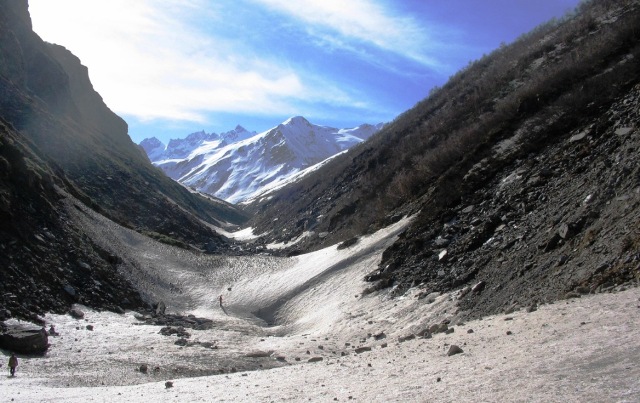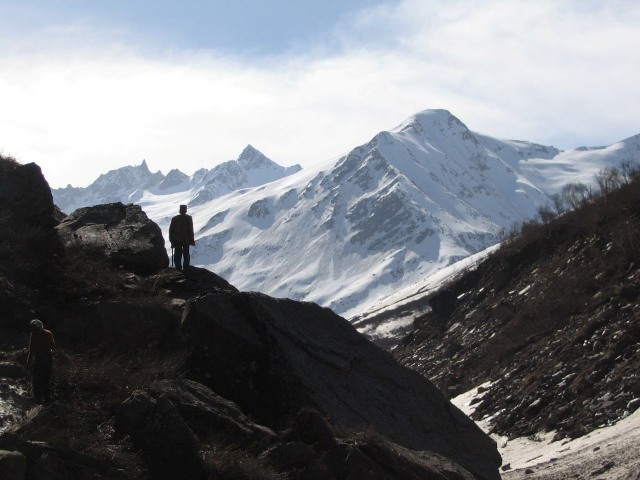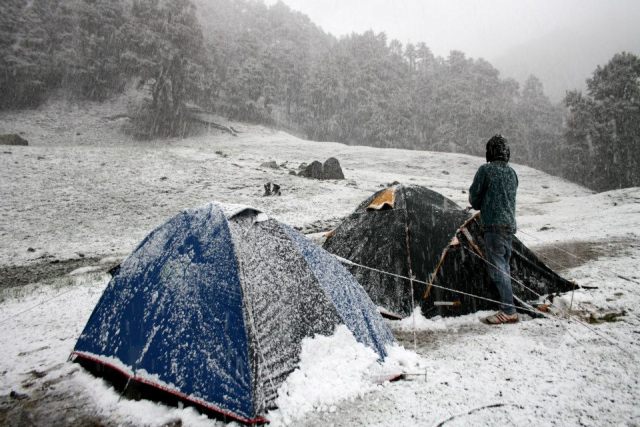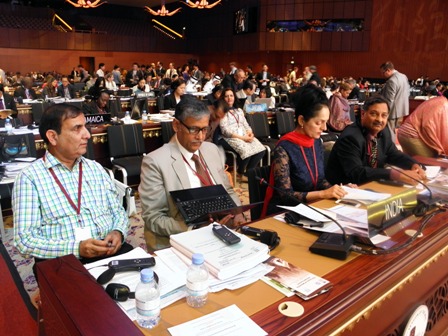Shimla: The Great Himalayan National Park Conservation Area (GHNPCA), part of the River Beas basin in Kullu valley of North India, has been accorded the prestigious World Heritage Site status.
After discussion of cultural sites, it was the natural sites that were taken up for discussion today at Doha (Qatar) for the coveted status by ambassadors and delegates at the UNESCO meet that after measuring stiff parameters accords the World Heritage Status.
The case of Great Himalayan National Park, which was also considered for the status last year, was discussed and approved today.
“This, indeed, is a very significant moment in the conservation history of the Western Himalayas. The GHNPCA remains a wilderness without any roads which help conserve the very fragile Himalayan ecosystems by restricting the number of trekkers in the area,” said Sanjeeva Pandey, a delegate from India representing the case of The Great Himalayan National Park, from Doha.
The GHNPCA has many small-small sacred groves commemorating saints who came here to meditate in the great sanctuary of Himalayas. The adjoining communities had economic dependence on the resources of the land incorporated into the GHNPCA.
In recognition of this adverse economic impact, extensive programs of Himachal Pradesh government and its forest department have been developed to provide alternative livelihoods including participation in ecotourism.
The communities are engaged in participatory conservation governance of the area.

The Great Himalayan National Park Conservation Area, in fact, is an offering of the local communities to the people of the World.
Creation of the Great Himalayan National Park Conservation Area as a World Heritage Site is an honour to the indigenous traditional conservation practices as well as sacred places of the Western Himalayas, said Pandey.
He elaborated, “It was about nine years ago when the Friends of GHNP, an informal group of volunteers coming from all walks of life (Indian and foreign visitors/trekkers) and believing that GHNPCA should have global support to protect a part of the unique environment and biological diversity of the Western Himalaya, initiated process of this area becoming a World Heritage Site.

Having become part of a world heritage site International Union for Conservation of Nature (IUCN) and United Nations Educational, Scientific and Cultural Organization (UNESCO) constant monitoring and observations would become the guiding principles for the biodiversity conservation of Great Himalayan National Park Conservation Area in the years to come.

Ultimately, the GHNPCA is for physical, mental and spiritual well-being of not only Indians or Himachalis but the people of Planet Earth. Today’s inscription is an appreciation of the natural and historic fabric of the Western Himalayas, said an elated Sanjeeva Pandey.
Situated at the confluence of Oriental and Palaearctic realms, GHNP provides a unique opportunity for the species from both biogeographic regions to thrive, disperse and evolve.
The Park is naturally protected by very high peaks and ridges on its northern, eastern and southern boundaries.
The ecozone’s 160 villages with about 15,000 residents on the western side of the Park are dependent on natural resources.
GHNPCA is home to several rare and threatened species including the Western Tragopan, Chir Pheasant, Snow Leopard, Himalayan Musk Deer, Asiatic Black Bear, Himalayan Tahr, Blue Sheep and Serow.
Some 25 Threatened IUCN Red-listed plant species are recorded from the park.

The GHNP has more than 35 peaks of greater than 5000m and two greater than 6000m which taken together are arguably more exceptional than a few isolated higher peaks in the region.
The boundaries of GHNP are also contiguous with the recently established (2010) Khirganga National Park (710 sq km), the Pin Valley National Park (675 sq km) in Trans-Himalaya, Rupi-Bhabha Wildlife Sanctuary (503 sq km) in Sutlej watershed and Kanawar Wildlife Sanctuary (61 sq km).
Together these four protected areas (PAs) add 1,949 sq km to the area around GHNP and its buffer zone, making the total contiguous protected area associated with the nominated property approximately 2,854.4 sq km not including the Ecozone.
The Great Himalayan National Park Conservation Area (GHNPCA) has GHNP (754.4 sq km), Sainj (90 sq km) and Tirthan (61 sq km) Wildlife Sanctuaries.
The 905.40 sq km GHNPCA includes the upper mountain glacial and snow melt water source origins of the westerly flowing JiwaNal, Sainj and Tirthan Rivers and the north-westerly flowing Parvati River which are all headwater tributaries to the River Beas and subsequently, the Indus River, extremely vital to millions of downstream users.
As Editor, Ravinder Makhaik leads the team of media professionals at Hill Post.
In a career spanning over two decades through all formats of journalism in Electronic, Print and Online Media, he brings with him enough experience to steer this platform. He lives in Shimla.






Hearty Congratulations to Team GHNP ! Its a proud moment for the people of Himachal & India that the IUCN has bestowed the WHS tag which will go a long way in supporting our fights for conservation in this amazing wilderness.
This is indeed a historic moment for Himachal in its struggle to preserve its natural environment. The team led by Sanjeeva Pandey, which has been pursuing this goal doggedly for the last few years, deserves the thanks of all nature lovers. We had almost lost the fight last year but sheer persistence and careful documentation has won the day. GHNP will now enjoy a higher level of protection with the IUCN and UNESCO also monitoring its sustainability. The hope now is that, not only the Park proper, but also its eco-zone will now be spared further damage by hydel projects of the Sainj HEP variety.
The flow of visitors to the Park is now bound to increase, and the challenge before the Park management will be to regulate and ruthlessly restrict the numbers. An immediate exercise should be carried out to assess its carrying capacity, trail wise, and allow visitors accordingly. We should not forget that the GHNP has not been created for us humans but for its natural and native denizens-its wildlife.
The next goal for Sanjeeva- to create a BIOSPHERE RESERVE comprising GHNP, Khirganga National Park, Hamta National Park, Pin Valley National Park,Kanawar, Tirthan, Sainj and Rupi Bhabha wild life sanctuaries!
Thanks to Mr Avay Shukla,
The boundaries of Great Himalayan National Park Conservation Area are also contiguous with the recently established (2010) Khirganga National Park (710 sq km), the Pin Valley National Park (675 sq km) in Trans-Himalaya, Rupi-Bhabha Wildlife Sanctuary (503 sq km) in Sutlej watershed and Kanawar Wildlife Sanctuary (61 sq km). Together these four protected areas (PAs) add 1,949 sq km to the area around GHNPCA and its buffer zone, making the total contiguous protected area associated with the nominated property approximately 2,854.4 sq km not including the Ecozone. The endeavor is put them together as one Conservation Unit. Will try to do it.
Hearty congratulations to Sanjeeva Pandey and his colleagues. His single minded devotion to wildlife and nature conservation has brought about this status to GHNP and honour and hope for HP. Keep up the good work guys.